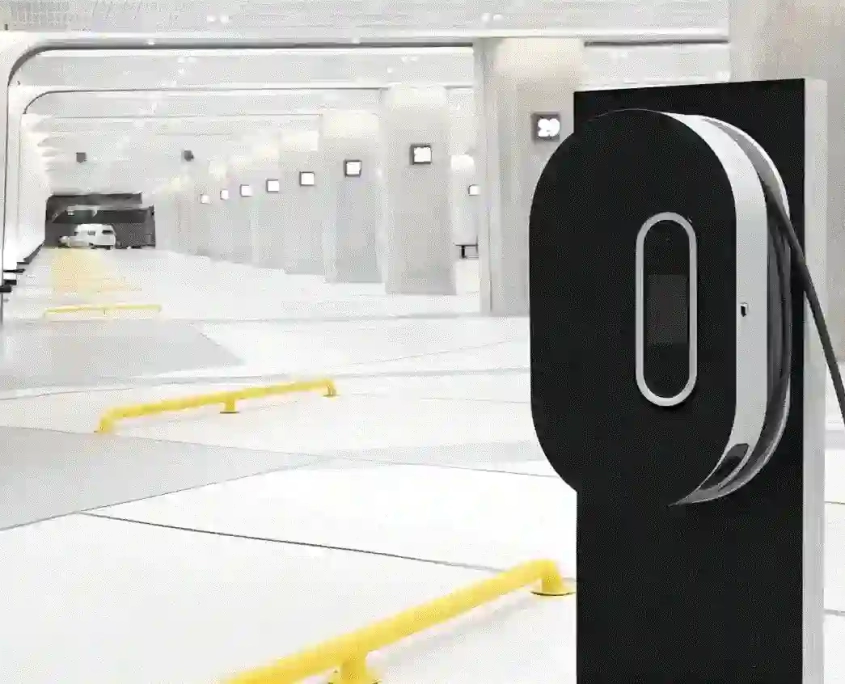Charging Stations: Powering a Greener Tomorrow
Table of Contents
As eco-friendly ideas become more popular, new energy vehicles are slowly becoming a part of our lives. When it comes to charging these vehicles, charging stations are essential.
Charging stations for electric vehicles work similarly to gas pumps at gas stations. They can be fixed to the ground or walls, or placed in community parking lots. They charge batteries of new energy vehicles by taking power from the grid and converting it to direct current (DC). Depending on the output current and voltage, there are different types of charging stations, including AC stations, DC stations, and converters.
One of the main benefits of electric vehicle charging stations is safety. Users don’t have to worry about getting shocked. Every charging method meets strict safety standards. Even in bad weather, like rain or snow, there’s no risk of shock since there’s no direct contact between the charger and the vehicle.

Pioneering EV Growth: The Importance of Charging Stations in Early Development
In the early stages of new energy vehicle development, charging stations stood out as one of the key components. Back then, creating charging stations was a critical step in the new energy vehicle supply chain, addressing the challenge of charging their batteries. Moreover, as new energy vehicles emerged as the next big industry after gasoline cars, they not only met people’s transportation needs but also played a vital role in energy-saving, emissions reduction, and improving environmental quality. Therefore, the construction of charging stations was a significant move towards popularizing new energy vehicles.
Globally, building charging stations became a primary strategy for many countries and regions to promote electric vehicles. For instance, the Chinese government has actively pursued the development of charging infrastructure in recent years to cater to the growing number of electric cars. By the end of 2020, China had established over 1 million electric vehicle charging stations, forming one of the world’s largest charging networks. Europe and the U.S. have also been ramping up their high-density charging networks to meet electric vehicle charging demands. Estimates forecast that by 2026, the global count of public charging stations will hit 16 million, roughly three times the 2023 figure.
Charging Forward: The Evolution and Improvement of Electric Vehicle Stations
As electric cars gain traction, the functions of charging stations are also evolving and improving. Currently, there are mainly three types of charging stations on the market: slow-charging stations, fast-charging stations, and super-charging stations. Especially, the fast and super-charging stations play a crucial role in boosting the charging speed and efficiency for electric vehicles.
Beyond basic charging, the data management and service systems of charging stations are drawing attention from various sectors. By harnessing internet and IoT (Internet of Things) technologies, one can monitor and record the usage and efficiency of charging stations in real-time. Based on this data, more detailed and precise service plans can be crafted. Additionally, leveraging smart parking systems and payment platforms enhances the user experience and service satisfaction.

Shell Launches Its Biggest EV Charging Station
On September 19, 2023, Shell’s largest global electric vehicle charging station officially opened in Shenzhen. Located just 2.5 kilometers from Shenzhen Airport’s terminal, the station boasts 258 public fast-charging terminals. The charging power reaches 250 KW, with some terminals even supporting ultra-fast charging at 480 KW. The station’s operations are managed by Shenzhen Shell BYD Electric Vehicle Investment Co., Ltd., a joint venture between Shell and BYD.
During its trial run, the Shell Shenzhen Airport charging station provided power to over 3,300 electric vehicles daily. Besides charging, the station offers various amenities like Shell’s premium convenience retail, Shell Café, dining options, vending machines, and lounges. Solar panels spread across the station’s roof generate an annual power output of 300,000 kWh, all of which goes towards charging customer vehicles.
However, challenges persist in the development and establishment of charging stations. The variety of charging stations leads to non-uniform charging standards for new energy vehicles. High construction costs, extended build times, and the need for standardization and centralized management pose additional hurdles. Tackling these issues requires concerted efforts from governments, businesses, and the community to propel the growth of electric vehicles and their supporting infrastructure.
Conclusion
Overall, as global focus intensifies on environmental conservation and efficient energy use, electric vehicles are emerging as the beacon of the future. Charging stations, serving as the foundational infrastructure for these vehicles, are entering a novel growth phase. Through technological advancements and service enhancements, these stations are becoming smarter, faster, and more user-friendly. This evolution ensures a comprehensive and efficient charging experience for EV users, further driving the proliferation of electric vehicles and shaping a brighter, greener society and lifestyle for all.


